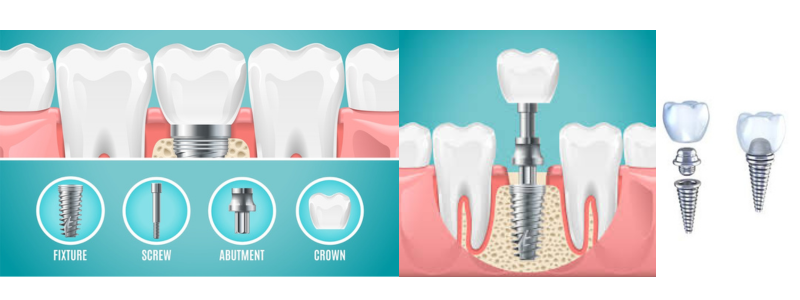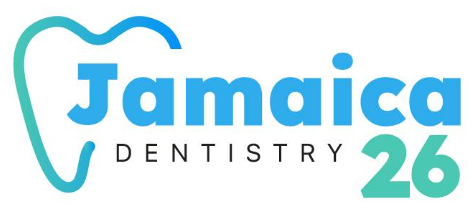Dental Abutments

A Complete Guide for Implant Patients on Dental Abutments
Dental implants have become accepted as the best possible solution for having a toothless gap or replacing extracted teeth, giving natural-looking and strong teeth, like real teeth. The titanium implant post which is inserted into the jawbone is a primary part of the implant system along with the dental abutment and the visible crown.
The abutment is the key component in the process that strongly attaches the implant fixture to the crown and makes the restoration long lasting and stable. To achieve the best results concerning long term oral health, it is necessary that each of the implant components and their materials be understood.
Jamaica 26 Dentistry offers top professionals to offer full dental implant services, such as abutment selection and placement as well as the implementation of the procedure in a sophisticated and patient oriented environment. They provide flexible working hours and accept insurance and Care Credit to facilitate accessibility.
In this blog post, you will explore the role of abutment in the implant system, their different types and materials and why one should understand every part of the implant process on the way to a confident, lasting, smile.
What Is a Dental Abutment?
A dental abutment is a minor yet important part of the dental implant kit that plays the role of a connector between the implant post and dental crown. When the implant (a titanium screw-like device) is surgically inserted into the jawbone and has completely attached itself via a process known as osseointegration, an abutment is then fixed onto the top of the implant. This final crown, bridge or denture is then stabilized by the said abutment-giving life and function to the lost tooth. Visit Jamaica 26 Dentistry to get affordable dental abutments from our experienced dentists.
A dental implant may include three parts:
Implant fixture: Surgery performed to plant these into the jawbone to serve as the tooth root
Abutment: Links the implant to the substitute tooth
Dental Crown: The visible portion which resembles a natural tooth
Types of Dental Abutments
Abutments are available in many forms, and the change in abutment types depends on the clinical requirements, esthetic demands, and economic factors of the patient. The three main types of abutments are listed below:
Prefabricated Abutments
Factory built prefabricated abutments are standard products in terms of their shapes, sizes and angles. Such abutments are convenient and are built to fit the majority of standard implant systems.
Key Features
Customized Design: Prefabricated abutments come in standard versions and are commonly manufactured out of titanium or zirconia. They are quite easy to select and place as their design is universal.
Affordable: Wedges are normally lower than custom abutments hence attractive to patients who would prefer a functional restoration at a reduced cost.
Easy to Use: Dentists can simply choose a suitable size and shape based on the manufacture catalogue and hence streamline the clinical process and minimise time loss at the dental chair.
Limitations: Although they are practical assistants, prefabricated abutments cannot give optimal aesthetic outcomes, particularly in front teeth, where the contour of the gums and accurate alignment are essential.
Custom Abutments
Custom abutments are uniquely made to fit a specific patient based on a rubber impression of the mouth or a digital scan. These are usually made out of CAD/CAM (computer-aided design and manufacturing) technology to fit extremely well.
Key Features
Personalized Design: The abutments are custom designed according to the gum tissue of the patient, the position of the implant and the angle of restoration. This provides a superior emergence profile, and natural-looking results.
Superior Aesthetics: Custom abutments ensure that in the front teeth or places that can be very obvious, the placement of the crown works best and that the gum can be supported properly making the overall look better.
Better Fit: Custom abutments are able to decrease the chances of food trapping, enhance hygiene, and provide superior crown attachment by adhering to the contours of the oral anatomy of a patient.
Considerations: Custom abutments are in general more costly, and require more lab work and design time, nevertheless, the aesthetic and functional advantages usually make the investment worthwhile.
Temporary (Healing) Abutments
Temporary or healing abutments, commonly called healing caps, are employed directly after the implant has been mounted and in the beginning stages of healing.
Key Features
Soft Tissue Management: Healing Abutments direct the gum to recover to a natural, healthful shape around the crown. This is important for a natural look and a healthy gum in the long run.
Protective Role: They cover the area of the implant and hold it open so that the gum tissue does not begin to cover the implant before the permanent abutment is used.
Short-Term Use: These abutments do not support a crown but are planned to ready a site to receive the permanent ones.
Transition Phase: Once the soft tissue has healed (usually after a few weeks), the healing abutment is replaced with a prefabricated or custom abutment for the final restoration.
Each type of abutment has its own use in the implant process, and your dentist will choose the most appropriate based on your anatomy, esthetics, and budget requirements.
Materials Used in Abutments
Titanium
Dental abutments are mostly made of titanium because it is highly strong, durable and biocompatible. It has the ability to fuse into bone as well as soft tissue and is a good option due to long-term success of implants. Its metallic color has the potential to shine through the thin gum tissue in some cases, which can be unappealing in aesthetic regions of the mouth.
Zirconia
Zirconia abutments are used because of their natural, tooth-like appearance and are therefore suitable for front teeth or patients with strong cosmetic requirements. Zirconia is also aesthetically attractive and biocompatible, which prevents plaque formation and leads to healthier gums. It is more brittle than titanium, but stronger, and might not be appropriate in regions under intense biting pressure.
Gold Alloy
Gold alloy abutments are less common in practice nowadays, but provide outstanding durability and a bespoke fit. Gold is mild for soft tissues and does not corrode, thus it is a reliable choice in certain clinical situations. It is however metallic in color and more expensive making it less desirable on visible teeth and more prevalent where the aesthetics is of less consequence as in back teeth and rear molars.
A Step-by-Step Guide For Dental Abutment Placement
Timeline After Implant Placement
After dental implants are surgically fitted into the jaw, they need a healing period of about 3 to 6 months. The implant will be allowed to complete its osseointegration phase, which occurs during this period by becoming part of the bone. It is not until such healing has occurred that the abutment can be safely and effectively attached.
Procedure for Attaching the Abutment
The abutment placement process is minimally invasive and done using local anesthesia. A small incision will be made by the dentist or oral surgeon in the gum so that the top of the implant can be exposed. The implant post is then screwed into the abutment. In other instances, a healing abutment is initially inserted to mold the gum tissue. The process is fast and painless.
Healing Time Before Crown Placement
Once the abutment is placed, it takes 1 to 2 weeks for the gum tissue to heal around it. This healing time helps the gums recover to their natural form and adapt well to the final crown or restoration. After the healing period is over, impressions are taken to craft a custom crown, which is then put into place to finish the implant restoration.
Caring for Your Abutment and Implant
- Brush at least twice a day with soft or medium bristled toothbrush and non-abrasive toothpaste to avoid contact with plaque development around the abutment and crown.
- Clean around the abutment base where bacteria can collect by flossing daily with implant-specific floss or by using a special brush or interdental brush designed to reach the base of the abutment.
- To minimize the chance of infection and maintain healthy gums, use an antimicrobial mouthwash recommended by your dentist.
- Visit a dentist for regular dental checkups and cleanings (twice a year) to check that the implant, abutment, and adjacent tissues are healthy.
- Avoid sticky or hard food such as ice, hard candy, and chewing gums which may put pressure on or harm the crown or loosen the abutment.
- Quit smoking or tobacco use, which may impair healing and cause a higher probability of implant failure.
- Check regularly the condition of your gums to detect possible complications, swelling, possible bleeding, or soreness around the implanted area and report to your dentist immediately they develop.
FAQs
What is a dental abutment, and why is it necessary?
A dental abutment is the ” connector ” that is attached to the top of a dental implant in order to support the final crown, bridge, or denture. It is essential to connect the visible tooth replacement to the jawbone-anchored implant in a secure manner.
Does it hurt when the abutment is placed?
No, placing abutment is usually a quick process and done under local anesthesia. You might expect some mild pain or tenderness later, but in most patients this can be easily resolved with over-the-counter analgesic use and a soft diet during the following days.
How long after the implant can the abutment be placed?
The abutment can usually be fitted 3-6 months after implant surgery when the implant has completely attached to the jawbone. This restorative period is important to make the implant long term stable and successful.
How do I clean around a dental abutment?
Brush with a toothbrush with soft bristles, interdental brushes or floss that are implant-compatible, and an antimicrobial mouthwash. Good oral care practices involving the abutment can decrease inflammation of the gum and guarantee longevity of the implant.
Can the abutment or crown come loose over time?
Yes, an abutment or crown may occasionally loosen with biting pressure or fitting instability. Whenever you experience any movement or otherwise feel discomfort, make sure you call your dentist right away so that it can be assessed and checked and tightened or replaced when necessary.
